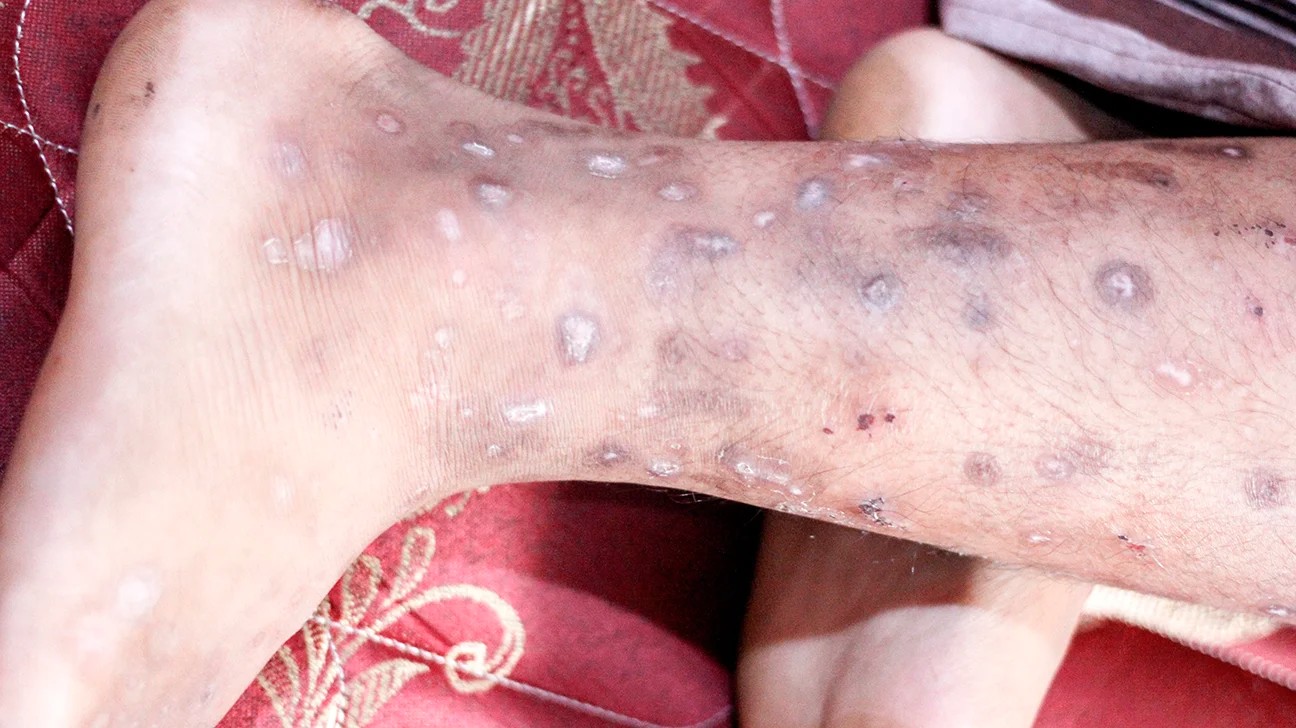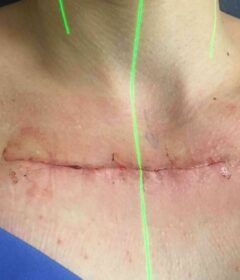Skin Infection: Types, Causes, and Treatment

Your skin is the largest organ of your body. Its purpose is to protect your body from infections. In some cases, the skin itself gets infected.
Mild infections are treatable with over-the-counter medications and home remedies, while other infections may require medical care.
Read on to learn more about skin problems and what you can do if you have one.
What are the different types of skin infections?
The following are the five different kinds of skin infections:
- Bacterial skin infections
Skin infections caused by bacteria typically start as tiny red bumps that gradually grow in size. Some bacterial infections are not severe and can be treated with topical antibiotics, but other infections require oral antibiotics. Different types of bacterial skin infections include:
- Impetigo
Impetigo is an extremely transmissible bacterial skin infection that affects infants and children. It is characterized by red sores that burst and form yellow-brown crusts. Impetigo can be treated with oral or topical antibiotics.
- Cellulitis
Cellulitis is a skin disease that affects the lower layers of skin and subcutaneous tissues. It may cause swelling, redness, and tenderness in the affected area. Cellulitis is generally treated with oral antibiotics.
- Boils and Abscesses
Abscesses and boils are pus-filled and painful bumps caused by a bacterial infection. They can occur anywhere on the body and can be treated with antibiotics or drainage.
- Viral Skin infections
Viral skin infections are caused by a virus. These infections range from mild to severe.
Different kinds of viral infections are:
- Herpes Simplex
Herpes Simplex is a viral infection that can cause blisters or cold sores around the mouth or genitals. It can be treated with antiviral medicines.
- Shingles
Shingles is a viral infection that produces a painful rash with blisters. This is caused by the same virus which causes chickenpox. It is treatable with antiviral drugs.
- Human Papillomavirus (HPV)
HPV is a viral infection that causes warts. There are more than 100 forms of HPV. Some can cause warts in the genital area. HPV can be treated with oral or topical treatments.
- Fungal skin infections
These types of skin infections are caused by a fungus and are most likely to develop in damp parts of the body, for example, feet or armpit. Some fungal infections aren’t contagious, and these infections are typically non-life-threatening.
Different types of fungal infections:
- Ringworm
Ringworm is a fungal infection that causes a red circular rash with a raised edge. It’s typically found on the legs, arms, and scalp. Ringworm is treatable with antifungal creams or oral medication.
- Athlete’s Foot
The athlete’s foot is a fungal infection that affects the feet. It’s characterized by itching, redness, and flaking of the skin between the toes. An athlete’s foot can be treated with antifungal creams or oral medication.
- Candidiasis
Candidiasis is a fungal disease caused by a yeast called Candida. It can affect different areas of the body, like the mouth, skin, and genital area. Candidiasis can be treated with antifungal creams or oral medication.
- Parasitic Skin infection
These types of skin infections are caused by a parasite. The infection can spread beyond the skin to the organs and bloodstream. The infection isn’t life-threatening; however, it can be uncomfortable.
Different types of skin infections are:
- Scabies
Scabies is a parasitic skin infection caused by mites that burrow under the skin. It can trigger severe itching and a rash. It is treatable with topical medications.
- Lice
Lice are parasitic insects that can live on the body, scalp, and pubic area. They may cause itching and red bumps on the skin. Lice can be treated with topical medications and special combs that remove the insects and their eggs.
- Leishmaniasis
Leishmaniasis is a parasitic infection that is transmitted by the bite of sandflies. It can cause skin sores that can become chronic and ugly. Leishmaniasis can be treated with medications.
What are the symptoms of skin infection?
The symptoms of skin infections differ depending on the type of infection. Common symptoms include redness of the skin and a rash. You may also have other symptoms like itching, pain, and tenderness.
Consult a physician if you have pus-filled blisters or a skin infection that doesn’t heal or becomes more severe. Skin infections can spread beyond the skin to the bloodstream. In this case, it can be life-threatening.
Signs of a severe infection include:
- pus
- blisters
- skin sloughing, breakdown
- Dark, necrotic-appearing skin or skin that turns discolored and painful
What are the main causes and risk factors for a skin infection?
The cause of a skin infection depends on the type of infection.
Bacterial skin infection: This occurs when bacteria enter the body through a cut in the skin, for example, a cut or a scratch. Getting a scratch or cut does not necessarily mean that you’ll get a skin infection, but it does increase your risk if you have a weak immune system.
A weakened immune system can result from an illness or the side effect of medications.
Viral skin infections: The most common viruses come from one of the three groups of viruses: poxvirus, human papillomavirus, and herpes virus.
Fungal infection: Body chemistry and lifestyle can increase the risk of developing a fungal infection. For example, you may experience multiple bouts of athlete’s foot if you’re a marathon runner or if you sweat a lot. Fungi often grow in warm, moist environments.
Wearing wet or sweaty clothes is a risk factor for skin infections. A cut or break in the skin can allow bacteria to enter the deeper layers of the skin.
SKIN TYPES AND SKIN INFECTIONS
Skin infections are a common problem that can affect people of all ages and various skin types. Your skin type refers to your skin’s natural characteristics, like its level of oiliness or dryness. Your skin type can impact how susceptible you are to certain types of infections, so it is essential to know your skin type to choose the right products and treatments that will help in preventing skin infections.
There are various types of skin that you can have, such as normal, dry, oily combination, and sensitive skin. Each type of skin is unique, and knowing the differences can help you figure out the most effective method of caring for your skin and preventing skin infections.
Normal Skin
Normal skin type is characterized by a well-balanced level of oil and moisture. People with normal skin tend to have few or no blemishes, and their skin appears well-nourished and glowing. This type of skin isn’t vulnerable to infections because it has an adequate balance of oil and moisture, which helps to maintain a healthy skin barrier. It is still essential to follow a healthy routine for your skin: cleansing, moisturizing, and sun protection.
Dry Skin
Dry skin is characterized by a deficiency of moisture, which can result in flaking, itchiness, and redness. Dry skin types are more susceptible to infection because dryness can cause skin damage and create cracks that allow bacteria to get in. To prevent skin infections, people with dry skin should apply a moisturizer to help hydrate the skin. It’s also crucial to stay clear of harsh soaps or products that can further dry out the skin.
Oily Skin
The skin type is characterized by excess oil production, which can cause breakouts and a shiny appearance. People with oily skin tend to be more susceptible to blackheads, acne, or other infections. To prevent skin infections, people with oily skin must use a gentle, non-comedogenic cleanser that can help to remove excess oil without stripping the skin of its natural moisture.
Combination Skin
This skin type is characterized by having both oily and dry areas on the face. People with combination skin may experience oily skin on the foreheads, nose, and chin (also called the T-zone), while the cheeks may be dry. The combination skin type is also susceptible to acne and other infections resulting from clogged pores.
Sensitive Skin
Sensitive skin is characterized by a tendency to react to specific products or environmental factors. Sensitive skin is more susceptible to reactions to redness, allergies, and irritation. To prevent infections, those with sensitive skin must use soft, fragrance-free products designed specifically for sensitive skin. It’s also crucial to avoid harsh ingredients and chemicals that can cause further irritation.
How is a skin infection diagnosed?
A thorough medical examination is the most effective way to determine the cause of a skin infection. In most cases, doctors can identify the type of skin infection by its appearance and location.
The doctor can inquire about your symptoms and look at any rashes, bumps, or lesions. For instance, ringworm often causes a distinct circular, itchy rash. In other cases, a sample of skin cells can help your doctor determine the type of infection.
How is a skin infection treated?
Treatment depends on the cause of the infection as well as the severity. Some kinds of viral skin infections can be cured on their own within some days or weeks.
Bacterial infections are usually treated with topical antibiotics applied directly to the skin or with oral antibiotics. If the strain of the bacteria is resistant to treatment, the treatment may require intravenous antibiotics administered in the hospital.
You can use over-the-counter products for antifungal use or creams to treat a fungal skin infection. If the condition doesn’t improve, ask your doctor about prescription topical or oral creams. Additionally, you can apply medicated creams to the skin to treat parasite skin infections. Your physician may also suggest medications to alleviate discomfort, such as anti-inflammatory medications.
Home care and alternative treatments
The home treatment for skin infections helps to alleviate symptoms. Home care may include the following:
- Apply cool compresses to your skin multiple times a day to ease inflammation and itching.
- Take over-the-counter antihistamines to reduce itching.
- Use topical creams and ointment to reduce itching and discomfort.
- Best soap for oily skin dermatologist recommended is one that contains salicylic acid or benzoyl peroxide as these ingredients help to prevent skin infections and breakouts.
Prevention of skin infections
There are many ways to decrease the chances of getting a skin infection. Regular hand washing is one of the best ways.
Skin infections soap can range from mild to severe. Schedule an appointment with your physician if you have a skin condition that is causing discomfort. Your doctor can offer the appropriate treatment for healing.




